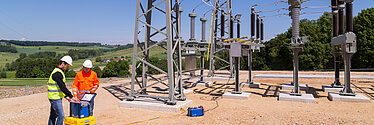
Line impedance measurements with CPC 100 & CP CU1
主要特点
Learn about the importance of accurate knowledge of line impedances for reliable distance protection performance. Get an overview of how to perform a line impedance measurement with CPC 100 and CP CU1. Learn how to assess line impedance measurement results for validity and how to apply the distance protection relay performance check.
学习目标
- Understanding the working principle of distance protection relays
- Calculation versus measurement of line impedances
- Connecting the test set to a power line by following relevant safety procedures
- Interpreting the results of the line impedance measurement and get the relevant data for the distance relay settings
- Overview of mutual coupling impedance applications
内容
- K-factor theory for understanding of relay parameterization
- Examples of zone reaches due to inaccurate line impedance estimation
- Connection of the test set to the power line
- Performing and assessing line impedance measurements by means of a dedicated EXCEL template
- Noise suppression considerations
- Using RelaySimTest for the assessment of impedance-related relay settings
时间
1:15 h
资料
Please use your official Email ID to register for this recorded webinar*.
*For the recorded webinar, we are using “Cisco Webex Events”. This is a Cisco Webex Meetings solution made available by Cisco Systems Inc. (San Jose, California, USA) to conduct our training sessions. For that purpose, your data submitted in the registration process needs to be forwarded to Cisco.
参加者
Primary Field-Testing Staff
Protection Engineers
必备知识
Knowledge of electrical engineering
Basic knowledge of protection engineering
产品
The line impedance EXCEL template
The CP CU1 and CP GB1
RelaySimTest

„真正令我感到印象深刻的是培训师采用正确的方式回答个人和全体人员的所有问题时所表现出的灵活性。“
